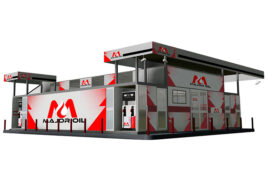During the past five years, businesses across the country have seen health benefits costs jump an average of 14% per year. As a result, companies are making tactical moves to help stop the bleeding, so to speak. Whether it’s increasing employee contributions or deleting certain drugs from prescription plans, all companies look for a cure.
“But those are short-term solutions,” says Bill Young, director of compensation and benefits at Sheetz Inc. (Altoona, PA). “During the last five years, our claims increased about 9.5% each year. When you look at the national trend, I feel pretty good about our numbers. But still, we said that we needed to take a step back and look at the big picture.”
To see things more clearly, Young organized Sheetz’s Strategic Healthcare Committee, made up of 15 top executives. The committee’s first meeting was in May, the second in August. They talked about a lot of things, including what employees thought about the Sheetz benefits plan, what changes should be made, and whether part-time associates even cared about benefits.
“Basically, we were trying to get a sense as to who’s using the benefits and what’s important to them,” Young says. “But we couldn’t answer those questions among the 15 of us, so we sent out an employee survey to about 1,400 people and asked them some questions.”
Some of the questions included:
- What would you change about the medical/prescription plan coverage to make it even more beneficial to you and your family?
- Is the Sheetz plan more affordable than coverage through other plans (i.e. past employers, spouses’ employers, etc.)?
- Was the benefits package offered by Sheetz a factor in your decision to originally come to work for Sheetz?
The results? “Employees, overall, are fairly satisfied with the package,” Young says. “In general, whenever we gave them an option to vent about us, they said our benefits package was a good one. Employees are concerned about how they’re going to be able to pay for benefits if the increases keep going up each year.”
On average, Sheetz pays about 65% of the premiums and the employees are responsible for the rest. Young says that, because of the staff’s relatively young age (the average employee is 37 years old, and the average age of all people covered is 30 years old), Sheetz fares well when it comes to expensive claims centering on conditions related to the heart or circulatory system.
“We have a relatively high rate for maternity claims,” Young says. “We also started to get a lot of our claims data and really drill down to what’s driving our claims. We have a lot of chronic conditions like asthma, diabetes and blood pressure that are often caused by lifestyle choices. So we’re really going to do a lot to focus on helping educate people to live healthier lifestyles.”
To do that, Sheetz is looking to develop a quarterly benefits newsletter, which Young says the chain will use to talk about healthy living and how to best use the health plan.
Self-insured or fully-insured?
Young, who before joining Sheetz as a full-time employee was the chain’s account manager at a benefits consulting firm, says large chains like Sheetz should self-insure.
“We have a self-insured medical plan where we really take on a lot of the risk on our claims,” he says. “We contract with Highmark, which is Blue Cross/Blue Shield of Western Pennsylvania. They process all of our claims and we utilize their network of doctors and hospitals.”
Young says whenever a company self-insures, it takes on the risk that it used to transfer to the insurance company. “Each year, we set projections for what we feel our claims cost will be for the upcoming year,” he says. “Once we do that, we set the deposit rates with Highmark. To the employees, the plan looks the same.” Each week, Highmark sends Sheetz a request saying the weekly claims totaled “this much” money, and Sheetz wires that amount to the company.
“If our claims are lower, then we make out well because we’re holding the money,” Young says. “If our claims are more, we need to come up with extra money. It fluctuates a lot more than when you have a fully-insured program in which you pay a set amount each year. Some years, our increases might be low, while other years our increases are higher.
“Typically, companies with more than 1,000 employees are self-insured, while companies with less than 1,000 are fully insured,” Young continues. “Because, most times, those smaller companies can’t afford the fluctuation. If there’s a premature baby and you have a claim of $300,000, that’s a big hit.”
Young says it’s easier for a company Sheetz’s size to absorb that type of expense because it’s only one big claim out of 3,500 Sheetz employees who are enrolled. Young says that about 5,500 of Sheetz’s 10,000 employees are eligible to receive benefits. Full-time employees at Sheetz become eligible for the benefits package the first day of the month after 90 days of employment. Part-timers must average 20 hours per week and be employed for two or more years.
Next up for the Sheetz benefits committee is a meeting to discuss recommendations for benefits changes based on information gathered during the first two meetings and the results of the employee questionnaire. After that, the committee will take its final recommendationsalong with a five-year planto the chain’s executive committee.




